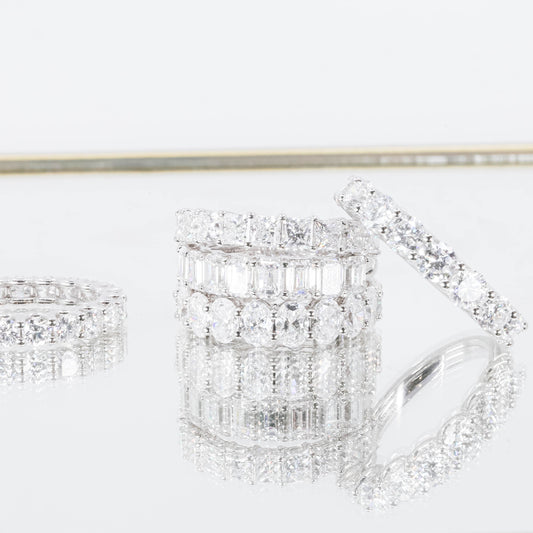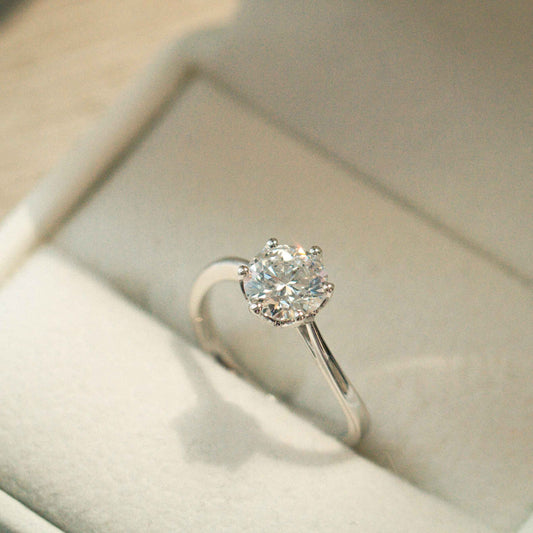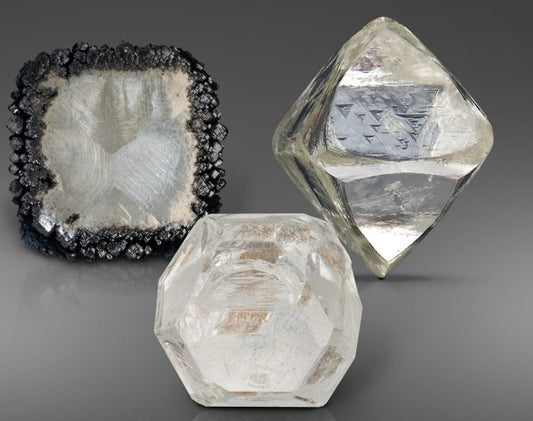[CVD Diamond Knowledge] 6 factors to consider when buying lab-grown diamonds in Hong Kong
What are the differences between natural diamonds and lab-grown diamonds? When purchasing diamonds, how should you choose between the two? We think it is unfair to make one-sided assertions about which diamond is superior. The most important thing is to cater to the needs of different customers and let them know how to choose the diamond that best suits them. Let Diamania's diamond experts analyze it in detail from different angles with an objective and balanced attitude.
What are lab-grown diamonds?
Laboratory-grown diamonds, also known as CVD diamonds, man-made diamonds, synthetic diamonds or Lab Grown Diamonds, etc., refer to diamonds produced in laboratories using advanced technology. Lab-grown diamonds are exactly the same as natural diamonds in terms of chemical composition and physical properties (including refractive index and hardness). The U.S. Federal Trade Commission has also updated the definition of "diamond" from the past to only refer to pure natural diamonds to include experimental ones. Laboratory grown diamonds.
How are man-made diamonds made?
Lab-grown diamonds/man-made diamonds are artificially created in laboratories, mainly through high-pressure and high-temperature methods (HPHT) or chemical vapor deposition methods (CVD), to accelerate the simulation of natural growth environments.
6 factors to consider when choosing natural vs man-made diamonds
1. Price and rarity
The biggest difference between the two is that the price of lab-grown diamonds is only 10 to 15% of natural diamonds. The higher the grade of diamonds, the greater the price gap. The main reason is that although the technical threshold for making laboratory-grown diamonds is high, it can be regarded as a sustainable production. The current technology has significantly improved compared with many years ago, and the production cost has also dropped. In addition to the high mining cost of natural diamonds, it requires It was formed deep in the mantle under high temperature and pressure over a very long period of time. It is extremely rare and precious, and it is impossible to increase its existence.
2. Ability to maintain value
For customers who use diamonds as engagement tokens, this may not be too important; however, there are also many customers who may be concerned about the possibility of upgrading diamonds or investing in them in the future, which is an issue worth considering. MiYa Diamond believes that laboratory-grown diamonds are mainly for personal use and should not be regarded as a tool for preserving value or investment. In contrast, natural diamonds have generally increased by 40% between 2020 and 2022. Even if the buying and selling price difference is deducted, if customers who bought natural diamonds early want to sell the diamonds, the selling price is likely to be higher than the purchase price. high.
Of course, we can only compare based on historical performance, and no one can guarantee that the price of natural diamonds will continue to rise in the future.
3. Appearance comparison
When the physical properties (including refractive index and hardness) and chemical properties are exactly the same, the appearance of laboratory-grown diamonds can be said to be exactly the same as natural diamonds. Both have the same scintillation, making it difficult even for experts to tell the difference between lab-grown diamonds and natural diamonds with the naked eye alone.
4. Certificate differences
Although artificially grown diamonds and natural diamonds have the same appearance, they have different types of inclusions and unique growth patterns. Although these factors do not affect the appearance of the diamond, they allow laboratories to distinguish the two types of diamonds. Like natural diamonds, artificially grown diamonds also come with appraisal certificates issued by top international appraisal institutions such as GIA and IGI, which list the quality level of the diamond, and will be engraved with "LAB GROWN" and "LAB GROWN" on the diamond's girdle. Certificate number, but the certificate will also indicate that the diamond is a lab-grown diamond, so it is basically impossible to pass lab-grown diamonds off as natural diamonds. Customers can also use the certificate to identify which type of diamond they are purchasing.
5. Market acceptance
The earliest artificially grown diamonds were produced to meet the demand for industrial diamonds. As the technology gradually matures, in recent years, jewelry-level artificially grown diamonds have been produced. In European and American countries, the development of artificially grown diamonds in the jewelry industry is relatively mature and widely accepted by the public, and is even sought after by many celebrities. On the contrary, in Hong Kong and Asia, artificially grown diamonds are a relatively new concept, and their acceptance by the public is relatively low. So high, it takes more time to understand and even popularize it.
6. Partner’s preferences
If you plan to use it for your own use, you really don’t need to worry too much about other people’s opinions, because the appearance of the two types of diamonds cannot be distinguished by the naked eye alone; if it is used as a diamond engagement ring, you need to know what your partner thinks about natural diamonds and the word “natural”. Is it taken seriously? Diamonds themselves have the meaning of "indestructible". Many customers will think that only "natural" diamonds are formed over a long period of time and accumulated over time, and only natural diamonds can represent eternity. Therefore, you must communicate and understand before purchasing diamonds so that you can choose the diamond that best suits your needs.
Why choose Diamania’s man-made diamonds?
Lab-grown diamonds are indeed man-made diamonds, but it should be noted that our definition of man-made diamonds is that the physical, chemical and optical properties are exactly the same as those of natural diamonds. Only then should they be called man-made diamonds.
Many merchants with bad sales practices like to abuse the term "artificial diamond". Whether it is zircon, moissanite or any "artificial diamond" that claims to be made by exclusive technology, they will call themselves "artificial diamonds" in the hope of pretending to be fake. Therefore, if you want to buy lab-grown diamonds in Hong Kong, be sure to visit a trustworthy store with many years of experience in selling diamonds, and only buy lab-grown diamonds with a lab-grown diamond grading certificate issued by a top laboratory.
In order to meet the needs of different customers, Diamania has specially launched the latest lab-grown diamond product line – Diamond Culture , as always, provides excellent quality and transparently priced diamonds. In addition to checking the real-time price of lab-grown diamonds on the website, customers can also browse various information about lab-grown diamonds. The website also provides a detailed introduction to everything you need to know about lab-grown diamonds: >> Click here to go to the lab-grown diamond website to learn more <<
Diamania is one of the first diamond shops in Hong Kong to publish diamond prices online, which also represents our confidence in price and quality. We have many years of experience in buying and selling natural diamonds. Most of our professional team members hold GIA-recognized qualifications and can answer all the questions about diamonds for our customers.
 +852 66299915
+852 66299915





